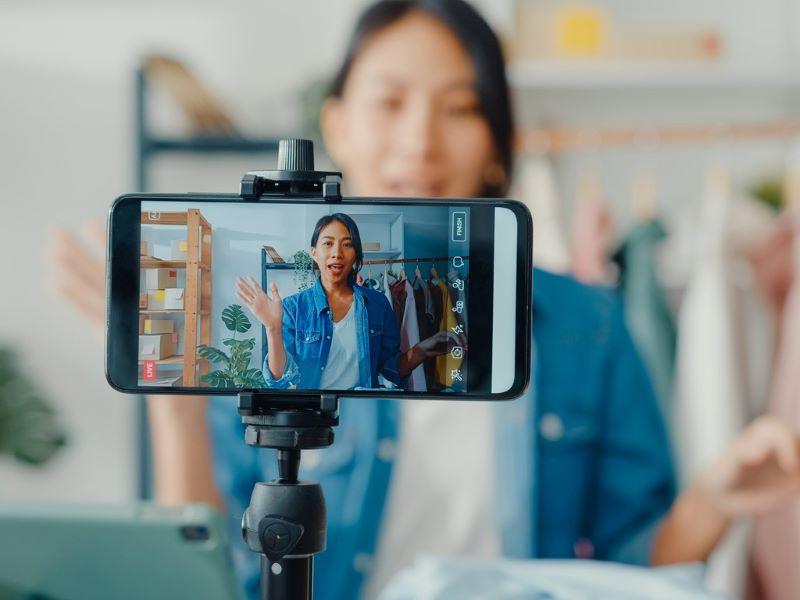
AcademiaTok: how to inspire Generation Z with academic research

To broaden the reach of our academic research and inspire a future generation of social scientists, we’ve embarked on a new approach to content-sharing on our social media platforms at the London School of Economics.
With a rich collection of research articles in our Research for the World online magazine, we had a great starting point for our project. Using this, we produced a series of short research explainer videos for TikTok and Instagram, covering topics ranging from citizenship investment schemes and cultural proxies to confidence culture and the digital workplace.
Here’s what we learned:
1. Peer-to-peer engagement builds authenticity and connection
Student voices are powerful. We progressed on the premise that younger demographics would be more interested in academic research findings if they heard about it from their peers. So we worked with a cohort of engaged student content creators to produce videos that were accessible and visible to younger people on broad-reach social media platforms.
2. Insight forms the bedrock of content development
We used data analytics to understand the performance of research videos across all social media platforms, focusing on views, impressions/reach, engagement and retention. While the LSE’s global reach and the variety of our research in social, economic and political issues make our video outputs hugely popular, insights showed that retention rates of longer research videos often dipped. This aligned with the increase of mobile users and the better performance of short-form community-oriented videos, evident in reports. Based on these, we decided on a video length between 40 and 60 seconds, which provided a clear time frame for the scripts and directed the editing process.
3. Focus on topical content
With a rich repository of articles about academic research, we were able to be selective when choosing the content that we believed would be of most interest to our audience.
Through insights, we know topical issues are most engaging for our audiences on social media, so we identified the articles that explored current affairs from interesting angles and could be produced in a short time frame.
4. Managed creative innovation is key
As we embarked on this new programme of activity, we were aware that we needed to work with creators who were familiar with the requirements of content for our channels and also with our positioning. We opted to work with students who had previously worked with us as part of a larger marketing project.
- Resource collection: The post-pandemic university: how to serve the Covid generation
- Tips for effectively communicating your research’s impact
- You’re a content producer now, part one: how to write articles for a mainstream audience
The online magazine articles we used as bases for our content had already neatly organised complex research in an accessible format for an external audience, which facilitated their adaptation to video scripts. The students worked alone on adapting them to one-page scripts that concisely presented the research. When the students began production, we recommended that they use green screen filters to illustrate their videos with visual elements to make them more engaging. As many of the social science issues we were trying to convey were not easy or appropriate to film on location, the green screen provided a useful solution.
Each video highlighted how the research fitted in the debate and ended with the call to action: “Find out more on LSE’s online magazine Research For The World”.
The series’ innovative style with students in the role of presenters of our research not only supports accessibility, but also fosters connections within our community.
5. Brand projection and resonance are vital
Our series taps into the institution's key strategic priorities of “Educating for global impact” and offering “Research for the world”. Students are encouraged to engage with interdisciplinary academic debates, and advance their analytical thinking. By enriching our outputs with research videos produced by students, for students, we provide our community with further opportunity for critical engagement in online spaces.
Last, it is important to note the indirect marketing value it brings. While all external-facing content can inspire prospective applicants, this series truly demonstrates the brilliant minds of our international community in an authentic, inclusive and accessible manner.
Overall, the series proved a tremendous success, both in terms of external engagement and in impact of research communications. We managed to approach a previously untapped target demographic and raise the profile of the magazine on visual-first platforms where promotion had previously remained minimal because the format of the content was incompatible.
Lina Filippidi is head of social media at the London School of Economics and Political Science.
If you would like advice and insight from academics and university staff delivered direct to your inbox each week, sign up for the Campus newsletter.
Additional Links
For more advice and insight related to this topic, see our spotlight guide From the lab to life: how to demonstrate research excellence.


